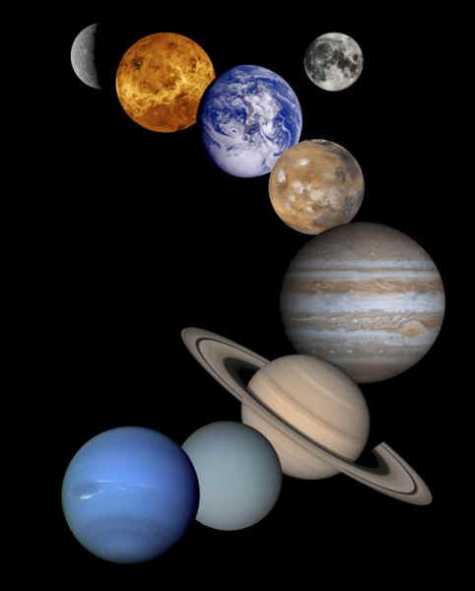Computer simulations show how special our solar system is
 Washington, August 8: A new study by Northwestern University astronomers has used computer simulations to show how special and unique our solar system is.
Washington, August 8: A new study by Northwestern University astronomers has used computer simulations to show how special and unique our solar system is.
Prevailing theoretical models attempting to explain the formation of the solar system have assumed it to be average in every way.
But now, the astronomers from Northwestern University have used recent data from the 300 exoplanets discovered orbiting other stars, to turn that view on its head.
The solar system, it turns out, is pretty special indeed.
The study illustrates that if early conditions had been just slightly different, very unpleasant things could have happened - like planets being thrown into the sun or jettisoned into deep space.
Using large-scale computer simulations, the Northwestern researchers are the first to model the formation of planetary systems from beginning to end.
The researchers ran more than a hundred simulations, and the results show that the average planetary system's origin was full of violence and drama but that the formation of something like our solar system required conditions to be "just right."
Before the discovery in the early 1990s of the first planets outside the solar system, our system's nine (now eight) planets were the only ones known to us. This limited the planetary formation models, and astronomers had no reason to think the solar system unusual.
"But we now know that these other planetary systems don't look like the solar system at all," said Frederic A. Rasio, a theoretical astrophysicist and professor of physics and astronomy in Northwestern's Weinberg College of Arts and Sciences.
According to Rasio, "The shapes of the exoplanets' orbits are elongated, not nice and circular. Planets are not where we expect them to be. Many giant planets similar to Jupiter, known as 'hot Jupiters', are so close to the star they have orbits of mere days."
"Clearly, we needed to start fresh in explaining planetary formation and this greater variety of planets we now see," he added.
The research team decided to follow the growth of planets, the gravitational interaction between planets, and the whole planetary system in its entire spatial extent.
They chose not to follow the gas disk's fluid dynamics in fine detail, but rather more generally. As a result, they were able to run simulations spanning a planetary system's entire formation.
The simulations suggest that an average planetary system's origin is extremely dramatic and violent.
According to Rasio, a turbulent history would seem to leave little room for the sedate solar system, and his team's simulations show exactly that.
"The solar system had to be born under just the right conditions to become this quiet place we see. The vast majority of other planetary systems didn't have these special properties at birth and became something very different," he said. (ANI)